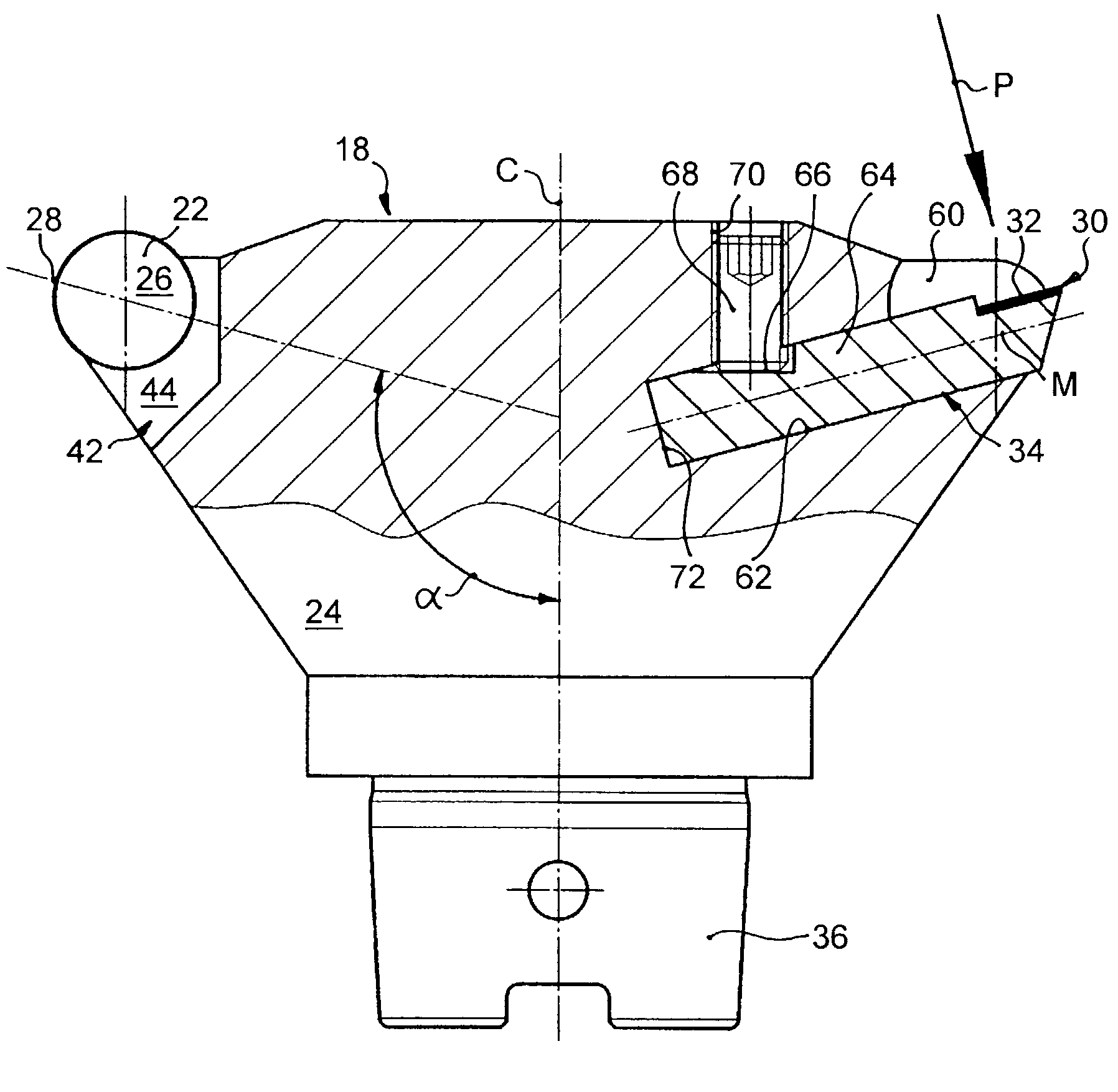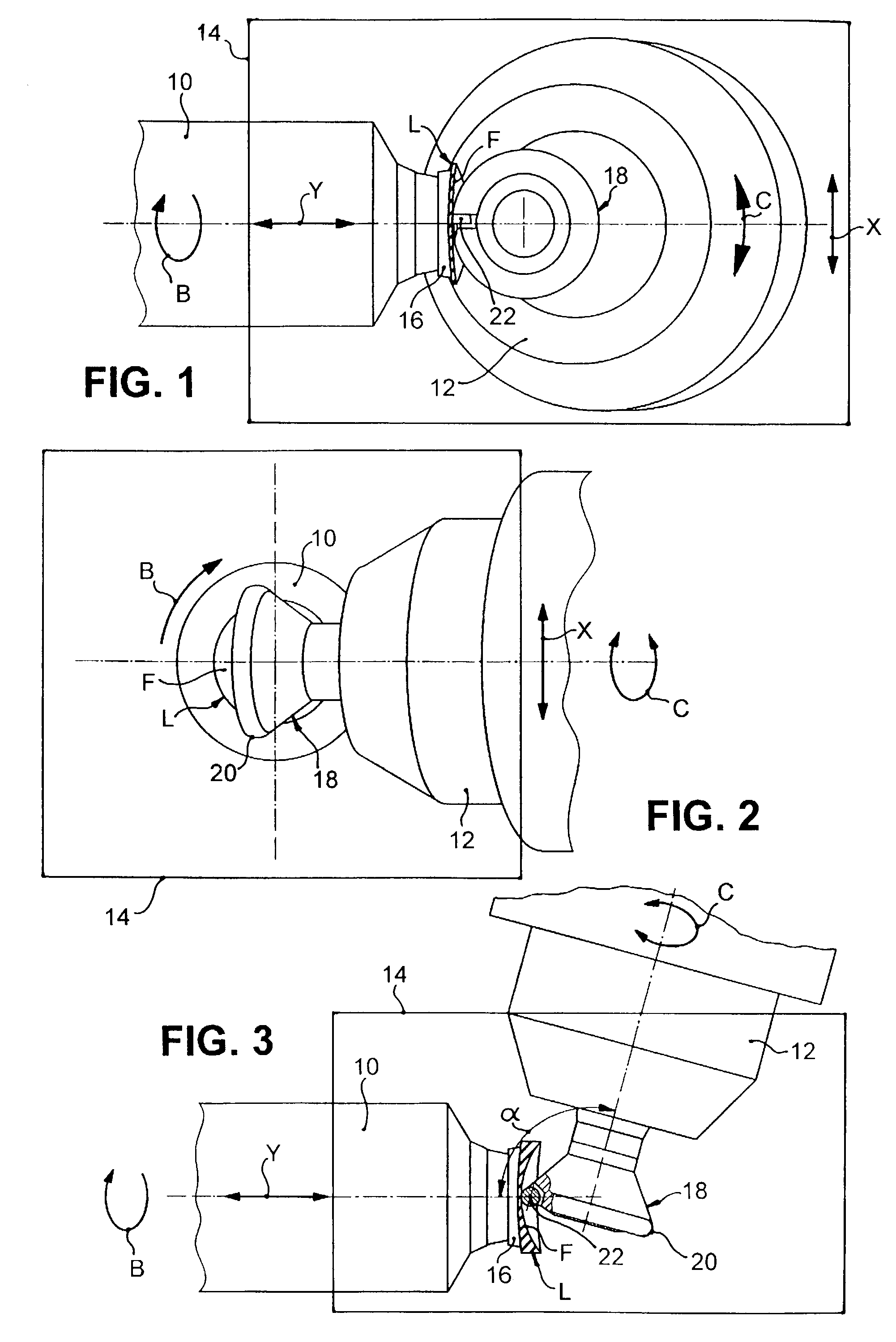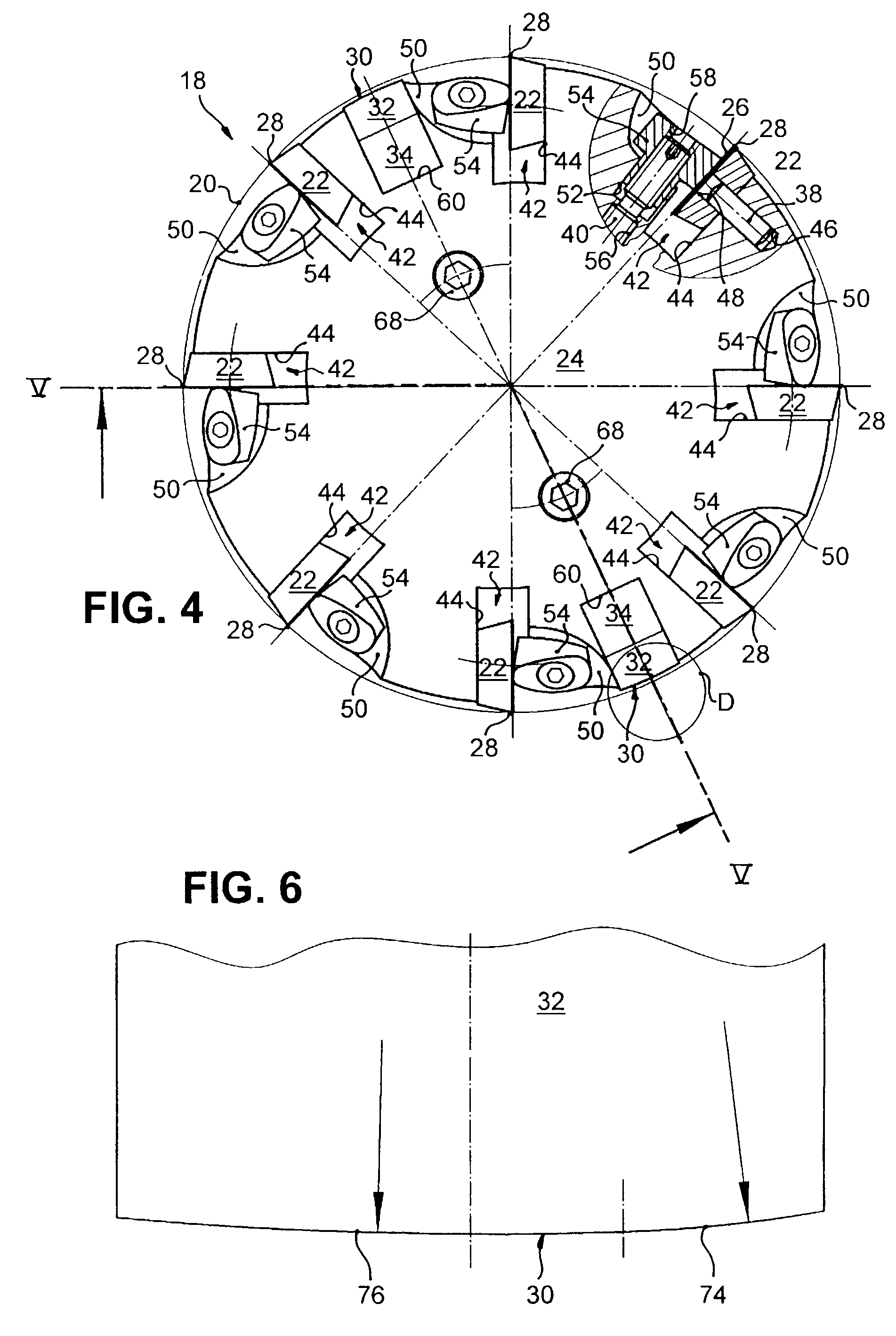Method and device for the surface machining of workpieces composed of non-brittle materials in optical lens manufacturing and tool for this purpose
a technology of optical lens and workpiece, which is applied in the direction of shaping cutters, manufacturing tools, instruments, etc., can solve the problems of not being able to follow on with any fining process using fixed-shape tools, not being able to cut blank material more than 5 mm thick, and known rotational machining methods using relatively expensive devices. , to achieve the effect of convenient chip removal and device loading
- Summary
- Abstract
- Description
- Claims
- Application Information
AI Technical Summary
Benefits of technology
Problems solved by technology
Method used
Image
Examples
Embodiment Construction
[0031]For the sake of simplicity, in FIGS. 1 to 3 only the work spindle 10 and the tool spindle 12 of the device for surface machining of plastic spectacle lenses L are represented, these spindles extending, suitably sealed off, into a working space 14 that can be shielded from the surroundings and is indicated by the solid lines of a rectangle. For machining of the prescription surface F, the spectacle lens L, blocked on a blocking piece 16, is mounted on the end of the work spindle 10 in a manner known in the art, in such a way that it can rotate coaxially with the work spindle 10. For this purpose the work spindle 10 can be driven to rotate about the axis of work rotation B, with the speed and the angle of rotation controlled by CNC, by means of an electric motor (not shown). Furthermore, the work spindle 10 can be adjusted, positionally controlled by CNC, by means of a carriage (likewise not shown) and assigned drive and control elements, in the linear axis Y, which in the examp...
PUM
| Property | Measurement | Unit |
|---|---|---|
| Area | aaaaa | aaaaa |
| Circumference | aaaaa | aaaaa |
Abstract
Description
Claims
Application Information
 Login to View More
Login to View More - R&D
- Intellectual Property
- Life Sciences
- Materials
- Tech Scout
- Unparalleled Data Quality
- Higher Quality Content
- 60% Fewer Hallucinations
Browse by: Latest US Patents, China's latest patents, Technical Efficacy Thesaurus, Application Domain, Technology Topic, Popular Technical Reports.
© 2025 PatSnap. All rights reserved.Legal|Privacy policy|Modern Slavery Act Transparency Statement|Sitemap|About US| Contact US: help@patsnap.com



